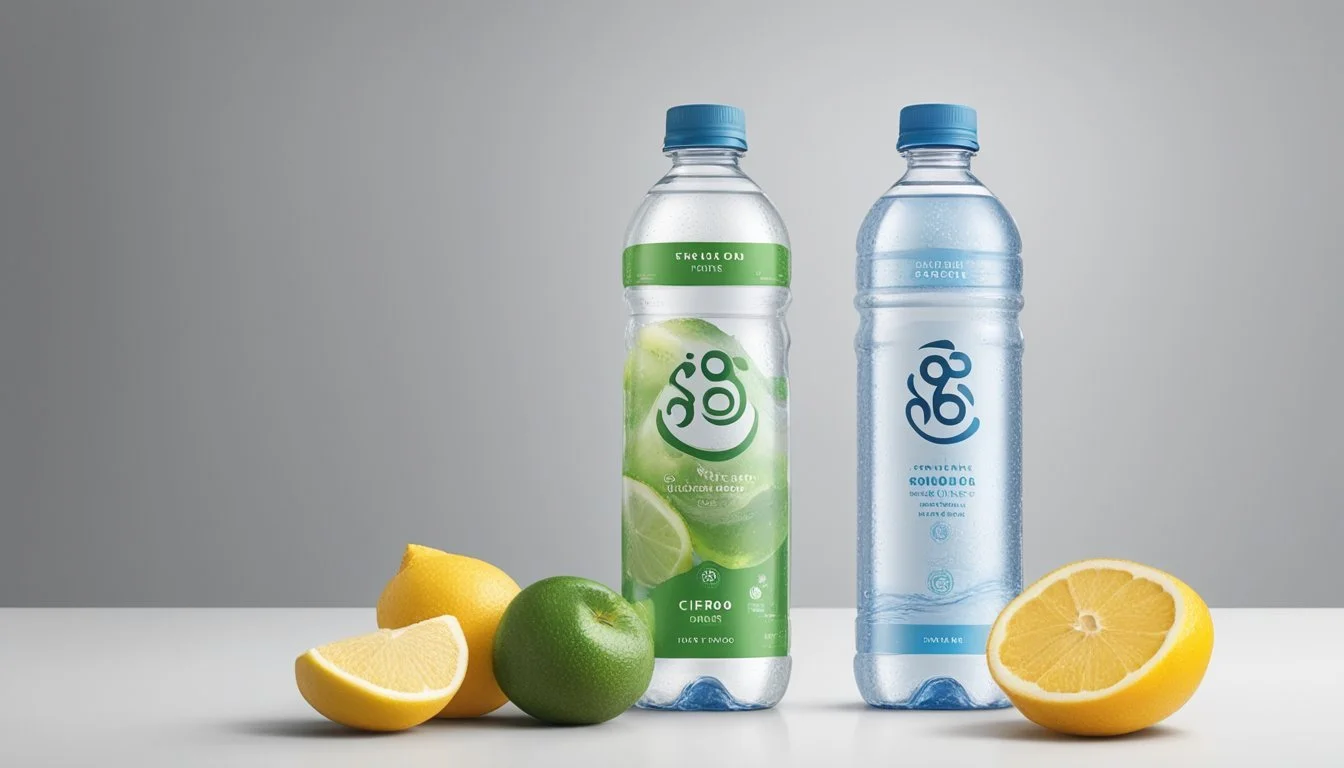Cirro vs. Whole Foods 365
A Bottled Water Comparison
When it comes to selecting the best bottled water, both Cirro and Whole Foods 365 present compelling options. Whole Foods 365 offers a range of water types, including spring water and alkaline water, each with distinct taste profiles and prices. Despite being affordable, some critics find the flavor of Whole Foods 365 spring water to be somewhat lackluster, describing it as sour with a dry aftertaste.
Cirro, on the other hand, is known for its crisp and clean taste, often preferred by those who seek a fresher, more refreshing hydration experience. Cirro's water goes through rigorous purification processes, which can result in a purer taste compared to many competitors.
For consumers prioritizing taste and purity, Cirro tends to be the better option. While Whole Foods 365 offers versatility and affordability, Cirro stands out with its consistent quality and appealing taste, making it a preferred choice for discerning water drinkers.
Understanding Bottled Water
Bottled water comes in various types, each with its distinct characteristics, regulations, and implications for health and the environment.
Types of Bottled Water
Spring Water is sourced from natural springs and contains minerals naturally present from the source. It often undergoes filtering to remove impurities but retains its mineral content, such as calcium and magnesium.
Purified Water goes through a rigorous purification process, such as reverse osmosis or distillation, removing contaminants and making it safe for consumption. This type often tastes neutral and has minimal mineral content, unlike spring water.
Alkaline Water has a higher pH level, usually around 8-9.5, and is believed by some to offer health benefits due to its reduced acidity. It may also contain added minerals to maintain its alkaline state.
Federal Regulations and Oversight
The FDA oversees bottled water quality and ensures it meets standards similar to tap water. These regulations cover permissible levels of contaminants like heavy metals (e.g., lead, cadmium, and mercury) and chemicals (e.g., PFAS).
The EPA monitors tap water but does not regulate bottled water directly. The International Bottled Water Association provides voluntary guidance to its members, ensuring higher safety and quality standards.
Consumer Reports often conducts independent tests, revealing the presence of harmful chemicals even in popular brands. This underscores the importance of stringent safety measures and transparency.
Environmental and Health Impacts
The environmental impact of bottled water includes high plastic waste and the carbon footprint of transportation and production. PET plastic bottles contribute significantly to pollution, urging the need for recycling and sustainable alternatives.
Health Impacts involve potential exposure to hazardous substances. PFAS chemicals, found in some bottled waters, are linked to adverse health effects, including cancer and hormone disruption. Safer bottled water options with minimal chemicals are essential for consumer health.
Nutritionally, bottled water can offer added minerals like sodium and calcium, but the actual health benefits vary. It's crucial to assess specific brands for their mineral content and safety certifications.
Comparing Cirro and Whole Foods 365 Waters
Cirro and Whole Foods 365 bottled waters differ significantly in source, taste, quality, packaging, labeling, price, and accessibility.
Source and Origin
Cirro Alkaline Water is sourced from natural springs and ionized to reach a high pH level. This process adds electrolytes, setting it apart from the usual spring water options available.
Whole Foods 365 offers various bottled water types, including spring, alkaline, and electrolyte water. Whole Foods 365 Spring Water is sourced from multiple springs in the U.S. Here, transparency in the sourcing process ensures consumer trust and establishes its credibility.
Taste and Quality Assessment
Cirro Alkaline Water offers a clean, smooth taste with a refreshing quality, attributed to its high pH and electrolyte content.
In comparison, Whole Foods 365 Spring Water has a more neutral taste, described by some as average with a slight aftertaste. Their electrolyte water options, however, provide enhanced flavor and hydration benefits, which appeal to active consumers or those seeking added health benefits.
Packaging and Labeling
Cirro Alkaline Water comes in sleek, eco-friendly BPA-free bottles with minimalist designs emphasizing its premium nature. The labeling provides clear information about the source and composition, adding to consumer confidence.
Whole Foods 365 uses standard plastic bottles, varying by water type. Each type emphasizes its unique qualities (spring, alkaline, electrolyte) on the label. The packaging overall is straightforward and practical, aligning with the brand's focus on value.
Price and Accessibility
Cirro Alkaline Water is priced higher, reflecting its premium market positioning. A 23.7 fl oz bottle typically retails around $2.99, making it less accessible for budget-conscious consumers.
Whole Foods 365 bottled waters offer competitive pricing, catering to a wider audience. For instance, their 500 mL spring water costs around $0.69, and the alkaline water options go up to $1.29 for a one-liter bottle.
Availability is widespread across Whole Foods Market locations, enhancing consumer access.
Health and Nutritional Factors
In comparing Cirro and Whole Foods 365 bottled water, key considerations include mineral content and hydration, presence of contaminants, and water pH levels.
Mineral Content and Hydration
The mineral composition of bottled water can impact both taste and health benefits. Whole Foods 365 offers various bottled waters, including electrolyte-infused options. For instance, the 365 Everyday Value Electrolyte Water (500 mL) provides added sodium and potassium bicarbonate, which can aid in hydration and electrolyte balance.
Cirro bottled water is known for its high-quality mineral content, including calcium and magnesium, which are beneficial for bone health and overall well-being. Unlike some purified waters, Cirro retains these essential minerals without compromising taste.
Presence of Contaminants
Contaminants such as lead, PFAS (per- and polyfluoroalkyl substances), and heavy metals are critical concerns in assessing bottled water quality. Consumer Reports has highlighted issues with PFAS in some bottled waters, though no specific findings for Cirro or Whole Foods 365 were noted.
Whole Foods 365's spring water is advertised as being free from added chemicals, but specific contaminant testing results are not readily available. On the other hand, Cirro promotes rigorous filtration processes to ensure the removal of common contaminants, offering peace of mind for health-conscious consumers.
Water pH Levels
The pH level of water can affect its alkalinity and potential health benefits. Whole Foods 365 offers an alkaline water option with a pH of 9.5+, which can help neutralize acidity in the body. This level of alkalinity is often marketed as beneficial for promoting balanced pH levels in the bloodstream.
Cirro's pH levels typically fall around 7-8, which is considered neutral to slightly alkaline. This balance supports hydration without significantly altering the body's natural pH levels. Consumers looking for water that avoids high acidity might prefer the options provided by these two brands.
In summary, both Cirro and Whole Foods 365 offer distinct advantages in terms of mineral content, contaminant safeguards, and water pH levels, catering to varying health and hydration needs.
Environmental Considerations
When comparing the environmental impact of Cirro and Whole Foods 365 bottled water, it's important to examine both the carbon footprint of the water brands and the sustainability of their bottling processes.
Carbon Footprint of Water Brands
The carbon footprint of bottled water is a significant concern. Every aspect, from water extraction to final transportation, contributes to the overall carbon emissions. Cirro and Whole Foods 365 both face scrutiny because bottled water generally has a higher carbon footprint compared to tap water.
Cirro tends to use extensive transportation methods, leading to higher emissions. Whole Foods 365, on the other hand, tries to localize sourcing to reduce transport emissions. According to Consumer Reports, long-distance shipping of water bottles is a primary contributor to increased carbon footprints. The Environmental Protection Agency (EPA) advises on reducing such emissions, aiming for more sustainable practices in the bottled water industry.
Sustainability of Bottling Processes
The sustainability of the bottling process is another critical factor. Cirro utilizes plastic bottles that are often not fully recyclable, posing an environmental hazard. Whole Foods 365 has taken measures to improve packaging, using partially recycled materials which are more environmentally friendly.
Consumer Reports has highlighted the presence of PFAS chemicals in several bottled waters, including Whole Foods 365. The safety and ingredients used in bottling play a role in determining the brand's environmental impact. Whole Foods 365’s efforts towards sustainable practices still need improvements, particularly in eliminating harmful chemicals from their bottling process. This aligns with recommendations from environmental safety organizations, emphasizing the need for clean, sustainable packaging solutions.
Consumer Information and Choices
Cirro and Whole Foods 365 provide distinct properties and claims, influenced by their branding and consumer reviews. Understanding these nuances can guide consumers toward making informed choices.
Labelling and Marketing Claims
Cirro often emphasizes purity and a refreshing taste in its marketing. Labels typically highlight the source of the water and the filtration processes used.
Whole Foods 365 labels stress natural sourcing, often indicating the water is sourced from springs. Consumers find terms like "spring water" and "naturally occurring minerals" frequently. Both brands aim to project an image of high quality and health benefits, but specific claims and terms used can vary significantly.
Consumer Reports and Ratings
Reports by Consumer Reports play a crucial role in understanding the quality and safety of bottled waters. For example, Consumer Reports found notable levels of PFAS chemicals in several brands, including Whole Foods 365.
Consumer ratings often reflect these findings, with sales and wellness being influenced by these consumer perceptions and oversight reports. User reviews emphasize taste, price, and potential health concerns, providing practical insights for purchasers making decisions based on quality and safety.



